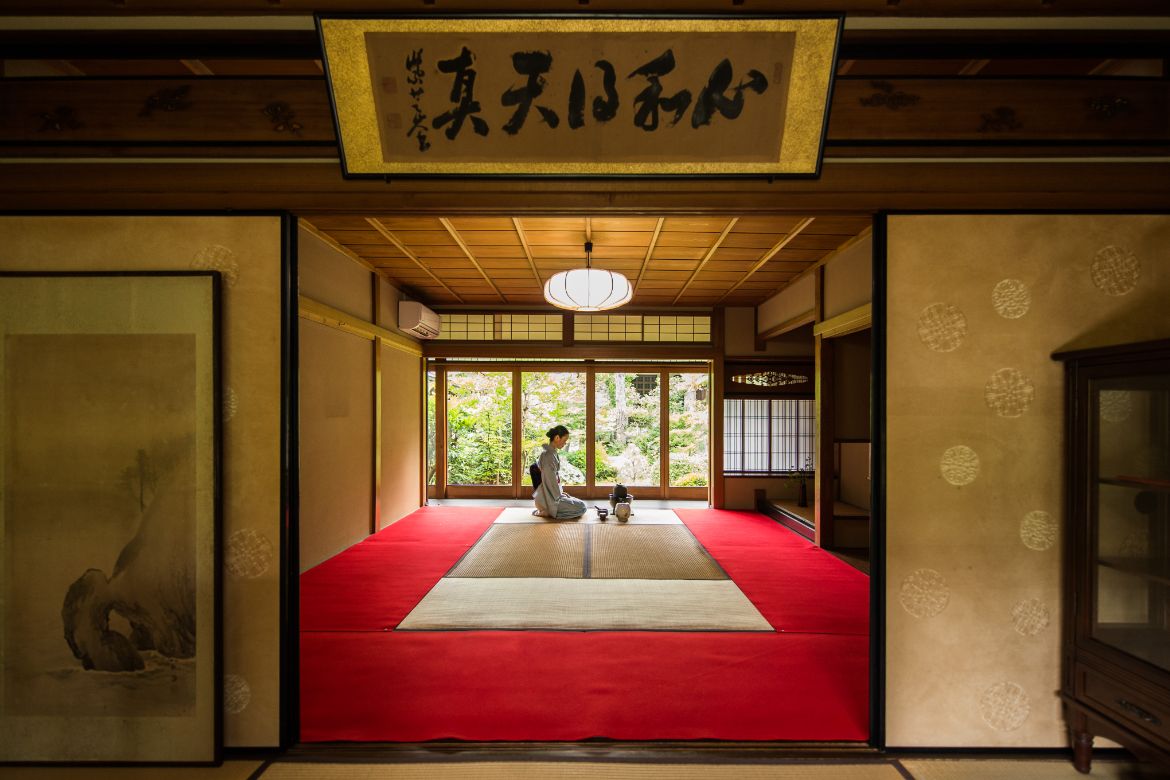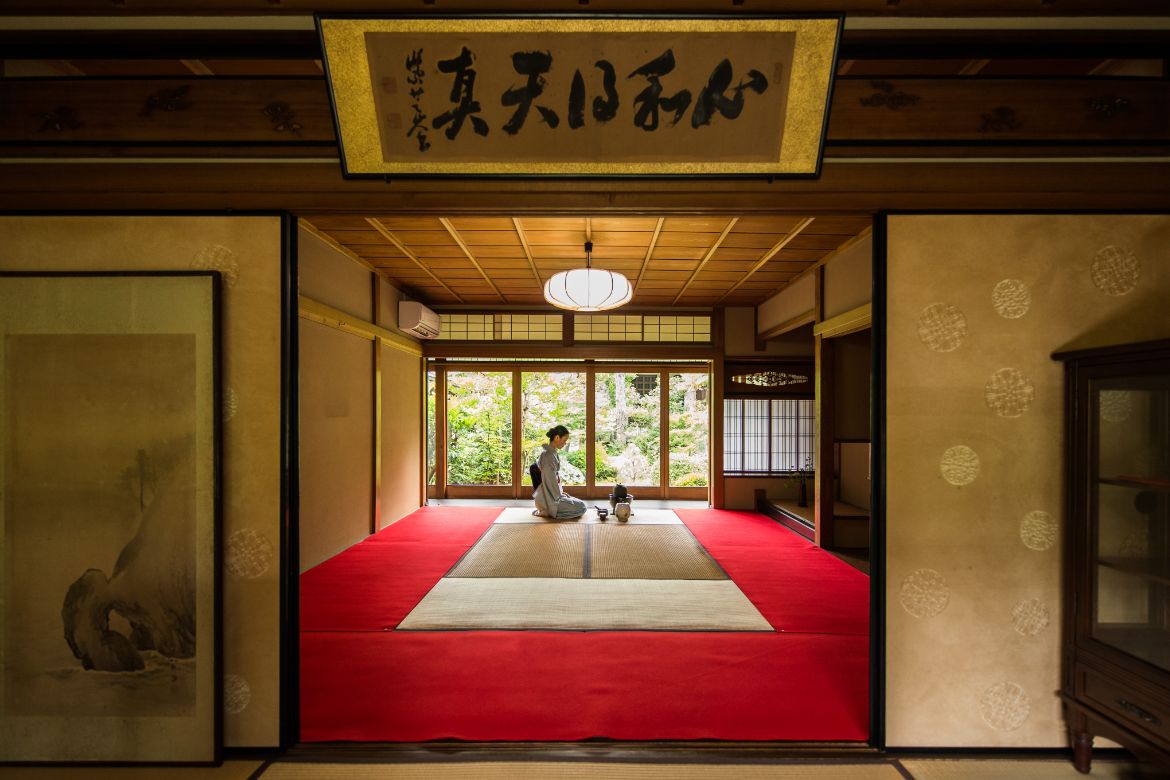Japan Art & Culture, Food & Wine, Trains, Wellness
Japanese immersion: 7 authentic travel experiences

It is easy to fall in love with Japan, harder to wrap your head around the place, given its culture is as intricate as it is beguiling. If you want to do more than skate over the surface, immerse yourself in some of these quintessentially Japanese travel experiences while you are there.

It is easy to fall in love with Japan, harder to wrap your head around the place, given its culture is as intricate as it is beguiling. If you want to do more than skate over the surface, immerse yourself in some of these quintessentially Japanese travel experiences while you are there.
Eat like royalty at a kaiseki restaurant
Can a single meal provide insight into an entire culture? Yes, it can, if you are in Kyoto and the meal in question is a kaiseki banquet. During its 1,000-year reign as the capital of Japan, Kyoto developed an elaborate food culture in which every aspect of the meal, from the garnishes to the plates on which it is served, tells a story. Today, restaurants such as Kyoryori-Manshige, now helmed by the third generation of the same family, continue that tradition with multi-course meals featuring super-seasonal ingredients and intricate tableware delicately decorated with traces of gold leaf and other embellishments.
Zen out in a garden
Japanese gardens are designed as havens of tranquillity and the Kenrokuen Garden in Kanazawa, around three hours by train from Tokyo, is acknowledged as one of the country’s best. Walking trails winding through the 11.5 ha garden allow you to explore its many quiet corners, from the stone bridges and lakes filled with koi to its pretty viewpoints and inviting teahouses. The garden, which dates to the 17th century, is exquisite in every season, from the plum and cherry blossoms of spring to blazing autumn colours, and even when it is draped with a snowy winter coat.
Take a trip aboard the Shinkansen
Travelling up to 320km an hour, Japan’s high-speed trains are the easiest and most comfortable way to travel around the country. For a hassle-free journey, book your seat in advance and, if you have anything larger than a carry-on bag, book a seat with oversized luggage storage — storage space on the trains is minimal, as the Japanese travel light. If you are expecting a European-style dining car, think again. Japanese travellers allow time to buy a bento box at the station before boarding — working your way through the selection of goodies is a highlight of the journey.
Snack on street food in Osaka
In a country like Japan where superb food is available everywhere you look, there is no bad place to be when you are hungry. Perhaps the best place to be when hunger strikes, however, is in Osaka, which has a reputation as Japan’s most food-obsessed city. And the best place in Osaka to get a fit of the munchies is on Dotonbori, a strip of restaurants, cafés, and street food stalls that serves up mouth-watering treats. Must-try dishes include the stuffed pancakes known as okonomiyaki, small cakes filled with red bean paste called taiko-manju, and, of course, Osaka’s signature snack, takoyaki or octopus balls.
Soak your cares away in an onsen
Hot springs are as much a part of Japan’s landscapes as its verdant rice paddies, so it is no surprise that an entire culture has sprung up around hot springs bathing. For a deep dive into the experience, head to a hot spring town such as the picturesque Kinosaki Onsen, about two-and-a-half hours away from Kyoto. There are no fewer than seven separate onsen within walking distance of the willow-lined canal on its main street, not to mention the al fresco foot baths. Start the day with a soak — your ryokan will supply the required robe and slippers — then spend the day exploring town, or perhaps taking a hike, before treating yourself to an evening soak as a pre-dinner relaxation ritual.
Check into a Tokyo designer hotel
With its neon-lit streets and bustling alleys, Tokyo is the city that never sleeps, so it’s important to choose a hotel that offers a cocoon of calm where you can retreat and recover after an exhilarating day. We love the Kimpton Shinjuku for its location in one of Tokyo’s liveliest neighbourhoods, its welcoming vibe and its many clever design touches, from the sculptural light fittings to the charred wood bedheads. Even the elevator interiors have been styled up. The bustling café on the ground floor and the bar-restaurant with an al fresco terrace up the ante.
Take time out at a tea ceremony
If you think a tea ceremony is all about enjoying a quick cuppa, think again. A traditional tea ceremony is a form of meditation according to instructor Atsuko Mori, who offers an English-language experience from her 100-year-old townhouse in Kyoto. Every movement, every sound of the ceremony — from heating the water to rinsing the cup to whisking the matcha — is designed to help you relax. “It’s about engaging your senses, enjoying the smell of the tea and every small sound. It’s like a slow dance. Everything is in flow,” she says.
Latest Articles
Don't miss the latest from Luxury Travel
